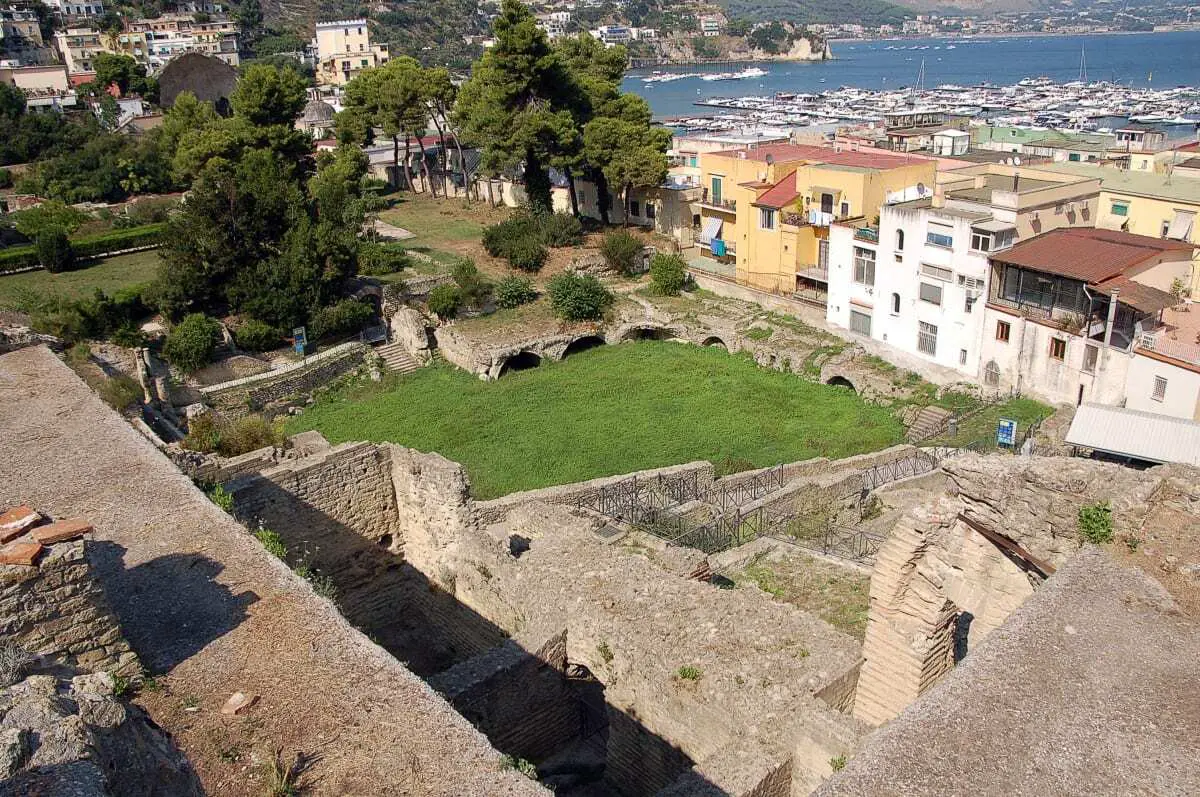Baiae is an archaeological site and the remains of a partially sunken Roman town, located on the shore of the Gulf of Naples in the present-day comune of Bacoli in Italy.
The earliest contemporary account of a settlement dates from 178 BC under the name of Aquae Cumanae. The settlement developed into a popular Roman resort which was visited frequently by many notable Roman figures such as Gnaeus Pompeius Magnus (also known as Pompey the Great), Julius Caesar, Gaius Marius, Lucius Licinius Lucullus, Hadrian, and Septimius Severus.
The town never attained a municipal status, but instead gained a reputation for a hedonistic lifestyle. This is supported by an account from 56 BC which records Clodia (daughter of the Roman patrician Appius Claudius Pulcher) being condemned for living as a harlot, a seducer and a drunkard in the “crowded resort of Baiae” during the trial of Marcus Caelius Rufus, in which Clodia had publicly accused Caelius of attempted murder by poisoning.
Baiae was also noted by Sextus Propertius, a poet of the Augustan age during the 1st century BC who wrote that the town was a “vortex of luxury” and a “harbour of vice”.

The most significant remains of the town consist of various high-status luxury villas, several dome-like temple structures, and the Parco Archeologico delle Terme di Baia. Some of the temples include the Temple of Diana (that was used for thermal baths), the temple of Mercury (which enclosed a frigidarium), and the Temple of Venus which has since sunk 3 metres beneath ground level.
Roman engineers constructed a complex system of chambers and tunnels that channelled underground heat and warm mineral water to the public and private baths of Baiae, which were used for recreation and to treat various illnesses.

From 36BC, Baiae included Portus Julius, the base of the western fleet of the Roman Navy before it was abandoned because of the silting up of Lake Lucrinus (from which a short channel led to Lake Avernus) for the two harbours at Cape Misenum 4 miles south.
Due to the position of the town on the Cumaean Peninsula in the Phlegraean Fields, an active and volatile volcanic region (which the Romans believed was the home of the Roman god of fire, Vulcan), local volcanic bradyseismic activity raised or lowered the geology on the peninsula leading to the lower town being submerged by the sea in the 8th century AD.
Header Image Credit – Mentnafunangann – CC BY-SA 3.0





